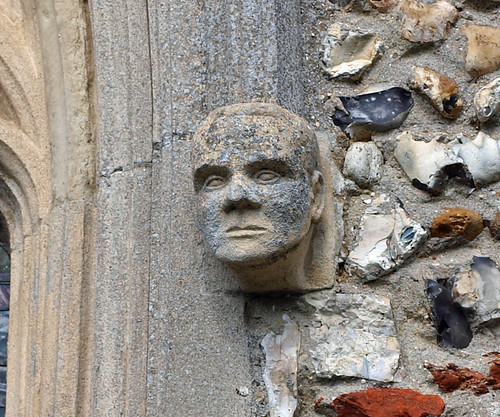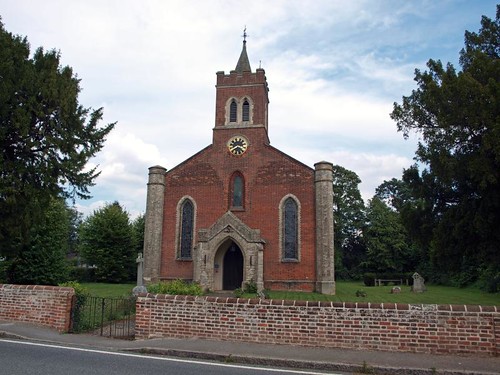The chancel, nave and aisles are 14th century (as usual extensively altered over successive years) whilst the handsome brick tower is Tudor built by John de Vere, Earl of Oxford - or at least under his orders.
Heavily restored much of it's internal interest has been lost.
ST ANDREW. The W tower with diagonal buttresses is C14 below, early C16 brick above, with battlements on a trefoiled corbel frieze and polygonal pinnacles. Norman nave, see the W quoins and N and S traces of windows. Much Roman brick re-used. In the chancel a doorway and a blocked lancet window of the early C13. The S porch is of brick, with stepped battlements and an older timber gable above. No fittings of interest.
COLNE ENGAINE. It is grouped round its church on a hill and has commanding views of the Colne valley. There are Roman tiles in the Norman nave, and a tower which was begun in the 14th century and finished 200 years later with two stages of brickwork. Its battlements and pinnacles project over a corbel table, and on one side is a shield with a mullet, the crest of the Earls of Oxford who were neighbours in the next village. We see the beautiful Tudor brickwork again in the porch, which has a stepped arch over the doorway with a new lead figure of St Andrew. The nave roof is 500 years old, and one of its corbels is a man who has been laughing all the time. There is a handsome modern eagle lectern, a fine 14th century piscina, and a brilliant east window showing the King of Kings and St Michael in a company of saints and martyrs and angels kneeling on the clouds. The church has a link with London and the Bluecoat boys. Its rectors are appointed by the Lord Mayor in his capacity as Governor of Christ’s Hospital, and here on the wall are tablets to two who were headmasters of that school. In the 100 acres of Colne Park stands a tall column put up in 1791 by the famous architect Sir John Soane; and a mile or so away is Hungry Hall, which, in spite of its name, has a great barn of seven bays in which to store the winter needs of man and beast.


